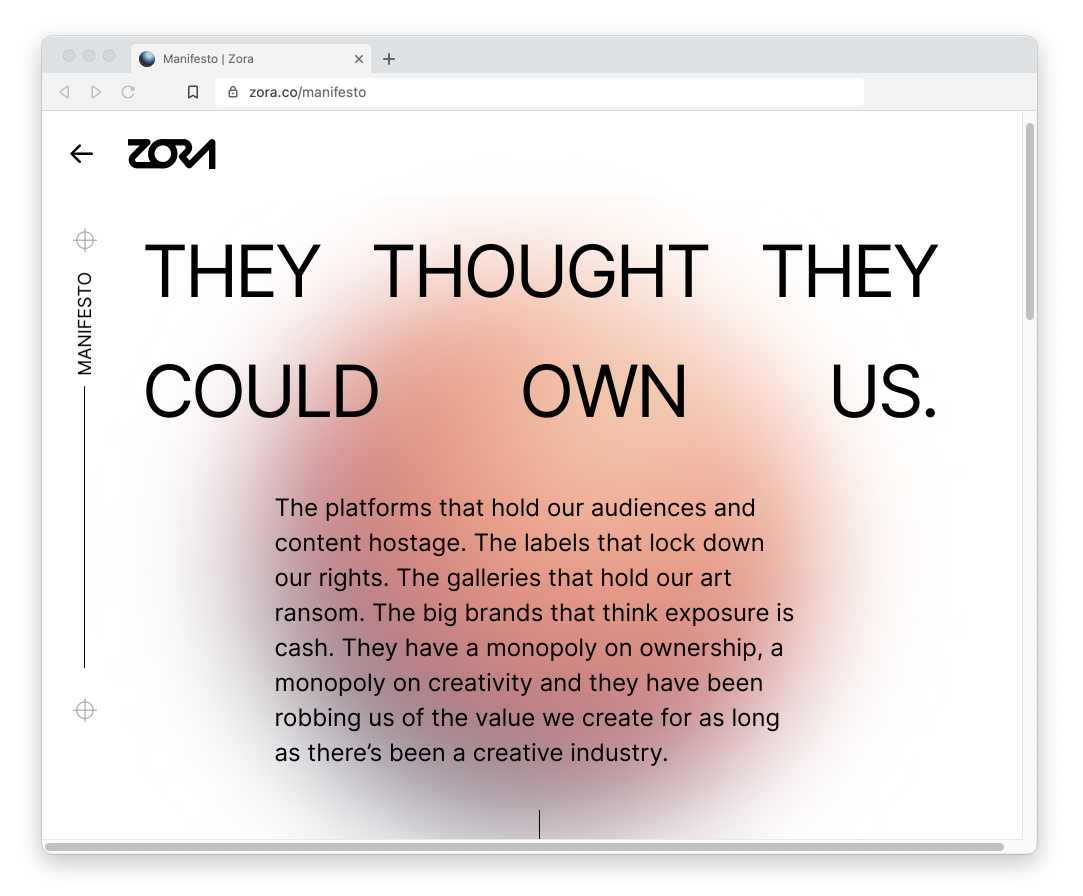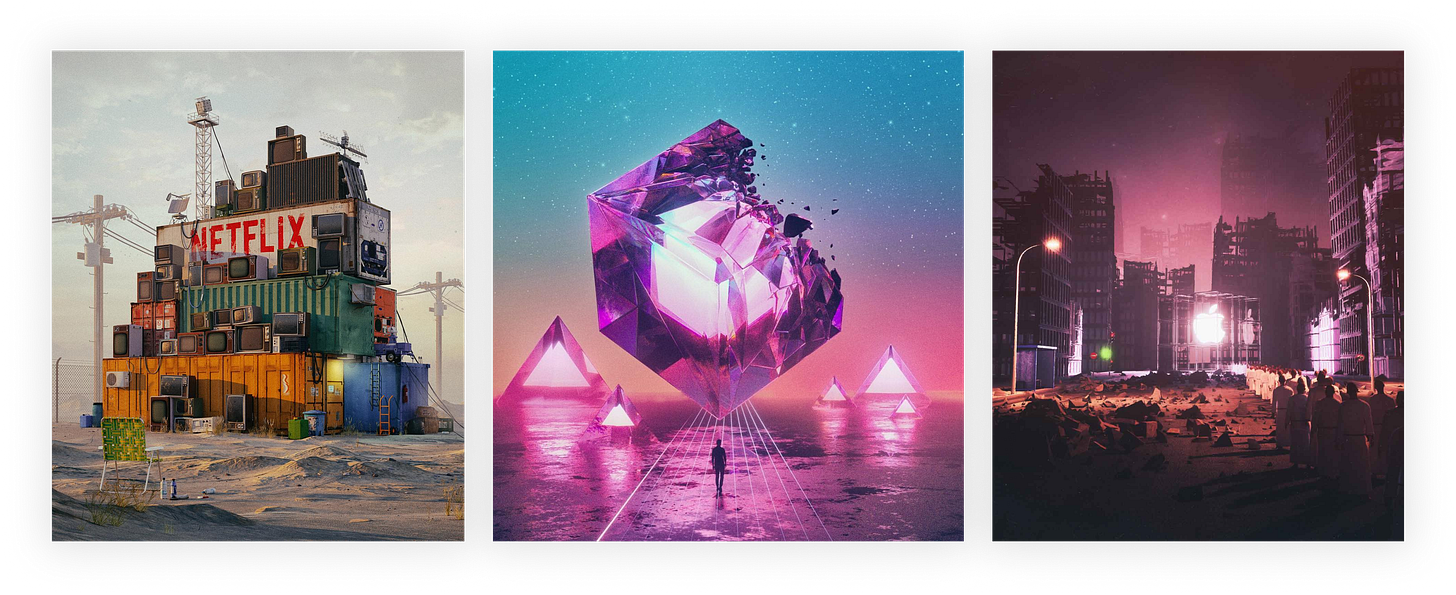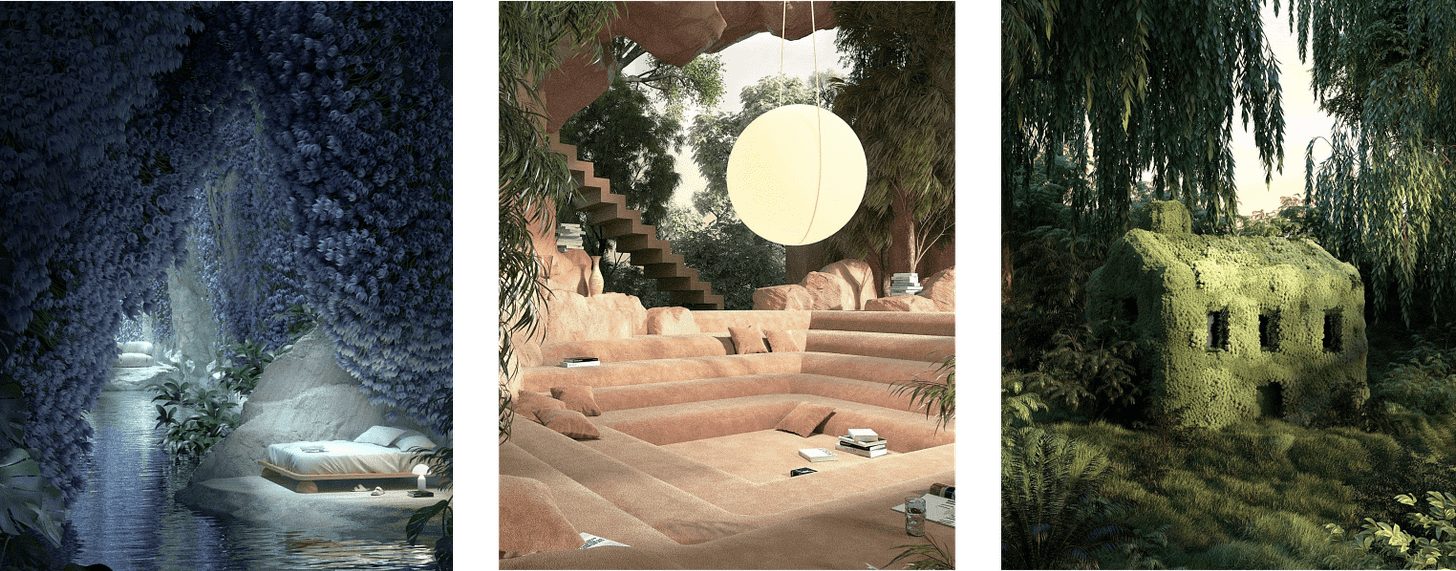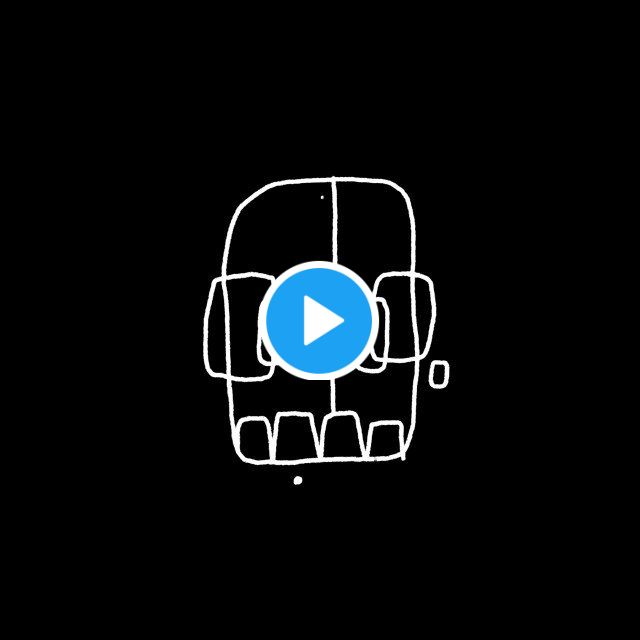Ethereum is eating the art world
What in the world is an NFT? Why should you care? And how do you make one?
By Nicole Mangiola
Join the Global Coin Research Network now and contribute your thoughts!
If you’d like to learn about crypto, join our Discord channel and be kept up to date with the latest investment research, breaking news and content, Crypto community happenings around the world!
Our current social platforms leave a lot to be desired for digital artists. The work that we share to these networks isn’t even ours, it’s technically owned by the platforms we post to. These platforms have amassed enormous amounts of wealth and power from feeding off of our creativity and our desire to connect. They would be nothing without us.
How can we support ourselves with our creative output when its value is stolen by tech giants? How can we fight back when they own the very digital spaces where we connect? The first step is to take back our digital commons. Blockchain technology has begun to make this possible. In blockchain networks, the users of the network are the owners of the network.

Own the network, own your work
Thanks to the Ethereum blockchain, any image, animation, audio file, or text file can be committed or “minted” as an immutable object to the shared network. These digital artifacts are called NFTs or non-fungible tokens. “Non-fungible” basically just means unique. NFTs are unique digital assets committed to the blockchain. These tokens are forever tied to the unique address of their creator. They can be sold, traded and collected directly on the community owned network. Each new owner is forever recorded in the artifact’s history, and its lineage will always trace back to its original creator.
These images and files can be shared and circulated around the digital world freely, but blockchain technology allows their origin and ownership to be tracked.
You can choose to create just one edition of a digital asset, or a number of editions that can be owned by multiple people.
We can get physical
Most of the talk about NFTs centers around the digital art use case, but physical objects can be tied to the blockchain too. Famous 3D artist Beeple recently sold 3.5 million USD worth of work in a single weekend through Nifty Gateway, some of which included physical frames that display his digital work.

Footwear brand Satoshi Studio already puts its physical products on a blockchain. Each item “has a QR code, enabling it to have a unique digital identity, that provides access to information, such as suppliers, materials, origin, authenticity, model, and instructions that stays with our products throughout their lifecycle. This feature gives our customers the ability to track our product, no matter the origin of acquisition.” [1]
In the future, many of the items we buy, sell and own could be recorded to a blockchain. With the rise of digital clothing (3D virtual clothing items) it might be common for physical items of clothing to come with their digital equivalents, and for each item to be tracked and logged transparently to a blockchain network.
We can keep it virtual, too
Selling virtual clothing and items in video games is already a hugely lucrative industry, by using NFTs artists will be able to benefit from their creations directly. Imagine when we start regularly buying and selling objects in virtual reality. There are already virtual art galleries within Cryptovoxels, a virtual world where users can buy and sell land parcels as NFTs. [2]
As more of our lives move into virtual realms, we’ll buy art to decorate our digital spaces. I imagine we will one day buy virtual real estate too, and this may happen sooner than expected. 3D artists will be our world creators.

What about musicians?
NFTs are not just for visual artists. You can mint your music as an NFT, too. Musicians are already minting and selling audio files on Zora. Beyond just NFTs, a new music streaming platform called Audius aims to decentralize the music industry and empower artists to own their masters and share the upside with their most supportive fans. EDM artist 3LAU has written a fascinating essay exploring how the decentralized music industry could develop.Zora ?? @ourZORAJust minted ? “One Hundredth Stream by” @mikeshinoda of Linkin Park There’s already $12,891 worth of bids, including one from @RAC ? Bid now: ?zora.co/mike/337
February 6th 202112 Retweets38 Likes
How to start
If you’d like to get involved and mint your own NFT, you first need to own some Ether (the native token of the Ethereum blockchain) and know how to use a cryptocurrency wallet. If you’ve never done this before, keep reading for a quick starter guide.
The first step is to buy Ether from a cryptocurrency exchange. Coinbase is the easiest place for beginners. You can use this referral link and get $10 of Bitcoin when you purchase at least $100 of any crypto. To mint an NFT today (in February, 2021), you will need around $100 worth of Ether. I’ll explain a bit more about network costs below.
Step two: once you buy your crypto, you’ll need move it off of the exchange and into a wallet. Crypto wallets are not just a place to store cryptocurrency, they also function as your key to interacting with the decentralized web. For making and buying NFTs, I recommend the Metamask wallet. You can download the Metamask chrome extension to use the wallet right in your browser. I recommend using the Brave browser, but if you’ve already got Chrome and want to get started, you can.
Step three: once you buy your Ether on Coinbase, you need to send some to your wallet address. Copy and paste the address from your wallet to Coinbase and try sending a small amount to start. It’s good to start small just in case you mistype the wallet address. Once you send crypto to an address, you can’t cancel the transaction to get it back, so be mindful. The transaction may take a few minutes for the network to confirm. When you see that the ether has arrived in your Metamask wallet, you can feel confident sending more to the address.
Step four: join the Ethereum art world! Once you’ve got your wallet set up with some Ether, you can use a few different platforms to explore the NFT marketplace. Rarible and OpenSea allow anyone to mint an NFT. Zora is currently open to those with invites and available more broadly soon. I have one NFT on Zora and plan to create more. There are more exclusive platforms like Foundation that have a hand selected roster of artists. SuperRare is another curated marketplace, if you think your work matches their curation, you can apply to join their artist roster.
A word of caution
You should feel confident exploring this new digital landscape, but before you start buying a significant amount of cryptocurrency and crypto art, it’s best to have a good understanding of the market and general cybersecurity best practices. I’m publishing another article on cryptocurrency for beginners in a few days, so if you’re new to this subject and interested, you can subscribe to this newsletter to get notified when it’s ready to read.
This is all an experiment
Blockchain is a very new technology and all of its applications are considered experimental. As with any new tech, there are some kinks that need to get worked out. I encourage anyone reading this to get involved and start playing around with the new technology, but also to be aware of its limitations.
Energy expenditure
There have been many critiques of the massive energy costs required to confirm transactions on blockchains. These critiques do not mention the massive energy costs of the server farms that keep our existing internet infrastructure running. These servers are run by private companies like Amazon, Google, and Apple that do not disclose their energy efficiency metrics.
Blockchains are community owned infrastructure, and they will allow us to examine energy expenditure honestly so that we can work together to build solutions. Our planet does desperately need to transition to renewable sources of energy, but that shouldn’t keep us from building new things. It should just encourage us to build more and better things.
For a balanced take on the issue, I recommend reading this piece from Nic Carter: The Last Word on Bitcoin’s Energy Consumption. This essay focuses on the Bitcoin blockchain, but much of it relates to Ethereum, too. Any blockchain that uses a “Proof of Work” model to confirm transactions is computationally intensive. The computers that run the network must use energy to solve complex mathematical equations (ie compute) in order to provide network security. This requires a lot of energy. Ethereum is currently transitioning away from the proof of work model to a more energy efficient consensus algorithm called proof of stake.
Network costs
The proof of work model causes another issue: high costs to transact. On the Ethereum blockchain, when there is a lot of strain on the network, “gas fees” become more expensive. These fees are paid out to the miners, the owners of the computers doing the work to confirm transactions. You can use the Ethereum Gas Station to check the current gas prices on the network.
When I minted my first NFT on Zora, it cost a little over $100 USD to do so. I was willing to burn that money just to mint something on Ethereum, I honestly didn’t expect to make a profit. Luckily someone bid on the NFT for 0.69 wETH (wrapped Ethereum, a tradable form of ETH) which at the time of writing is worth about $1200.

Developers are currently working on Ethereum 2.0, which will transition the blockchain from a proof of work consensus model to a proof of stake model. This should reduce some of the costs and much of the environmental impacts of using the network. You can read more about this transition from this article: Ethereum 2.0 – What is Proof of Stake?
All new technologies have drawbacks. There is a very passionate and conscious group of technologists working on solutions.
Consider this a quick start guide
I hope this has given you some confidence to start exploring the new cyberspace art marketplace. This is just a brief overview of NFTs, there is so much more to learn. To dive a little deeper, I recommend this beginner’s guide to NFTs from Linda Xie. If you have any questions, please feel free to reach out to me on twitter or instagram and I’d be happy to point you towards more resources to learn.
If you’d like more of my writing in your inbox, I’d love to have you as a subscriber. I plan to publish a few more beginner’s guides to blockchains and cryptocurrency within the next week. I typically write about emerging technology, art, culture, history, and philosophy.













